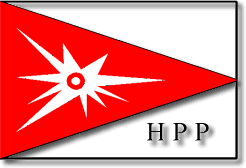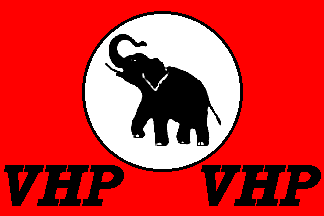![[Boschneger Party flag (?)]](../images/s/sr-bosn.gif)
image by Jaume Ollé, 21 Febuary 1997

Last modified: 2014-05-29 by zoltán horváth
Keywords: suriname | boschneger |
Links: FOTW homepage |
search |
disclaimer and copyright |
write us |
mirrors
See also:
![[Boschneger Party flag (?)]](../images/s/sr-bosn.gif)
image by Jaume Ollé, 21 Febuary 1997
In the 80s a guerilla group in Surinam controlled part of the
country. Is named Boschneger (Bosneger Party) and the leader was
Ronnie Bruswijk. I found a flag perhaps the Bosneger flag. I also
saw two other flags that use the same colours and light blue, in
diferent pattern, and include 24 stars each.
Jaume Ollé, 21 Febuary 1997
To understand the called Boschneger rebellion and related
evenements, it is important to place them in their historical
context. Starting in late 1986 and continuing into 1987, a
Maroon guerrilla movement, known as the Jungle Commando, led by
former Sgt. Ronnie Brunswijk, rose up against the Army headed by
then military dictator, Lt. Col. Desi Bouterse.
Army repression was swift, harsh, and indiscriminate against the
Maroon people. (The Maroons, also known as Bush Negroes,
are descendants of escaped African slaves. They constitute
about 10% of the national population). As a result,
thousands of Maroons and hundreds of Amerindians were uprooted
from their homes. Over 200 were killed including women and
children. Approximately 10,000 Maroons fled to French
Guiana and an equal number moved to the capital,
Paramaribo. The resolutions referred to above dealt with
some of these cases.
However, in 1988, a new democratically elected Government was
installed and one of its first tasks was to negotiate an end to
the fighting between the Army and the Maroons. To that end,
a tripartite agreement was drawn up among the Governments of
France and Suriname and the United Nations High Commissioner for
Refugees to provide for the safe return of the Surinamese Maroons
who had taken sanctuary in camps near St. Laurent, French Guiana.
In addition, the Government negotiated a peace agreement known as
the Kourou Accords with the Jungle Commando. This pact
provided, among other things, that the Jungle Commando would
serve as a police force in Maroon areas in eastern and
south-central Suriname.
Before the Kourou Accords could be implemented, however, Army
Chief, Lt. Col. Bouterse denounced them as "treason"
and "unconstitutional." Since that time, the role
of Lt. Col. Bouterse and the Army has grown to the point that the
duly elected civilian authorities have, in reality, a secondary
role in the peace process, supplanted in practical terms by the
Army. This began with a series of private, fact to face
meetings between Lt. Col. Bouterse and Jungle Commando leader
Ronnie Brunswijk, in which the two apparently achieved, for a
period, a sort of modus vivendi.
Thus, early October 1989, the city of Moengo, the bauxite center
of Suriname, was peacefully occupied by the Jungle Commando with
the acquiescence of the Army. Sometime thereafter, however,
a group of Amerindians called Tucayama Amazons, allegedly
organized and armed by Army, conducted a raid on the Jungle
Commando forces in Moengo. It has been reported that 20
persons died in the fighting.
The Commission has been informed that the Army has taken
advantage of ancient grudges held by some Amerindians against the
Maroons who were relative latecomers to lands originally occupied
by the native Amerindians. It appears that the Army has convinced
some Amerindians that the Kourou Accords granted unfair
advantages to the Maroons.
Since the initial attack, the Amerindians have divided into
pro-Army and anti-Army camps with the former engaging in proxy
fights with the national police on behalf of the Army, the
historical rivals of the police. They have also been
involved with the arbitrary detentions and killings of other
Amerindians who oppose the Army's militarization of the Indians.
Evidence of complicity between the Army and the pro-Army faction
of the Tucayana Indian leaders held a televised press conference
in Lit. Col. Bouterse's Paramaribo office. The leaders
publicly "declared war" on the national police force
and threatened two journalists by name. Although Lt. Col
Bouterse denied having prior knowledge of this event, but did not
disavow it.
Violence between pro- and anti-Army Indian groups was
particularly intense during February of this year. On
February 5, 1990, the Army, in an attempt to protect its Indian
allied, attacked the insurgents and reports reaching the
Commission indicate that at least 14 Indians were killed.
In addition, a number of insurgent Indians were captured and held
incommunicado.
Lately theres some movements related with this evenements in
Surinam:
- General Liberation and Development Party or ABOP, led by Ronnie
BRUNSWIJK
- Mandela Bushnegro Liberation Movement, led by Leendert ADAMS
- Tucayana Amazonica led by Alex JUBITANA and Thomas SABAJO
Jaume Ollé, 30 January 2003

image from the HPP
site, located by Dov Gutterman, 29 August 2000
"Hernieuwde Progressieve Partij" - Renewed
Progressive Party (it's precursor was the Progressive Party)
Ton Zijlstra, 29 August 2000
Nationale Partij Suriname got 16 Members of parliament and
described as a party supported by creoles A photo on their website show
them using green flags with the party symbol of black-white torch
with red flame, together with the letters NPS as in the party
symbol at <www.nps-suriname.com>.
Knut A. Berg, 16 August 2005
Flag of Pertjajah Luhur,
political party of Suriname, can be seen here.
From wikipedia:
"The Pertjajah Luhur is a Javanese political party in
Suriname. At the last legislative elections (25 May
2005), the party was part of the New Front for Democracy and
Development that won 41.2% of the popular vote and 23 out of 51
seats in the National Assembly. Paul Somohardjo is the leader of
the party."
More about party (in Dutch) on official site.
Aleksandar Nemet, 10 February 2010

image by Mark Sensen, 26 March 1999
I located VHP flag at <www.parbo.com/vhp>.
I think there are no elephants in Suriname except in zoos and on
this party flag.
Dov Gutterman, 26 March 1999
From the same webpage: "The followers mainly consisted of
people of the countryside, predominantly descendants of British
Indian and Indonesian immigrants", ... and in those
countries elephants are no exception.
"Verenigde Hervormings Partij " In English is
"Progressive Reformation Party", although the literal
translation is "United Reformation Party".
Mark Sensen, 26 March 1999